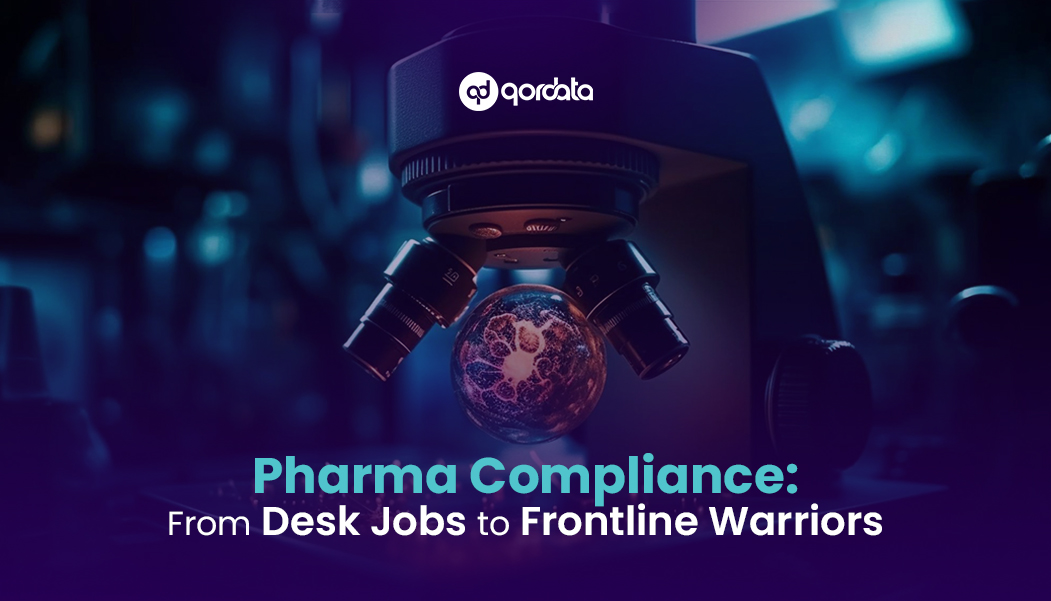Table of Contents
ToggleTransparency reporting stands at the forefront of innovation in the life science sector. The evolving compliance requirements demand advanced technology in the form of software or a platform to help compliance teams to meet compliance requirements.
What is generally being derived in transparency reporting is considered data or information, and the only objective of countless life sciences companies is to solely meet compliance requirements by the end of a quarter or annually.
However, here at qordata, we believe that aggregate spend reporting is the primary reason behind innovation in the life science sector. The extensive documentation of the interactions with HCPs, HCOs, and patients requires modern tools to collect, validate, and submit.
Artificial intelligence, machine learning, data-driven foundation, and analytical capabilities are perhaps some of the technologies that enable organizations to derive value out of the data collected for reporting to the CMS.
These technologies provide visibility and exposure, and experts can extract actionable insights that can later be translated into strategic actions that a business can implement to strengthen internal processes further, ensure best practices, improve HCP engagement, etc.
Furthermore, the data insights not only provide ground for the betterment of transparency reporting but also can be leveraged by other departments, i.e., marketing, sales, legal, HR, and research and development.
Let’s further explore the possibilities that transparency reporting has for the life science sector while keeping innovation at the center of the equation.
The Era of Tech-Led Transparency Reporting
With the inception of transparency reporting and continuous reiteration of the compliance requirement – the challenge of collecting, sorting, and validating data became evident.
In addition to that, the increasing life science market has raised the competitiveness of the compliance management system to a whole different level.
Therefore, the integration of technology in life sciences companies was inevitable. However, when the technology was integrated, it significantly enhanced compliance and engagement protocols by leaps and bounds.
But even good technology needed a robust foundation to be based on or an environment in which it could perform exceptionally well. Integrating modern technology into a culture where outdated processes and old-school mentality were the norms would reap no results.
This realization enabled healthcare professionals and companies to revisit conventional workflows, reassess and remediate existing processes and eventually follow the lean methodology to address compliance challenges.
Furthermore, the decision to embed compliance into the very core of the technological solution that gave companies a surefire way to tackle certain roadblocks involved in transparency reporting.
It changed perspectives, and fast forward to today – we’ve got companies that are leveraging data to drive certain decisions related to HCP engagement, marketing activities, promotional programs, and even sales.
The Role of Artificial Intelligence & Data Analytics
Although on its own, data has the power to give you an extremely competitive advantage, manual collection, validation, sorting, and storage of this data is a time-consuming process, and while you’re doing it – it becomes difficult to focus on other critical aspects of your business.
Enter artificial intelligence. With the integration of artificial intelligence in transparency reporting platforms, automation became the new norm for life science companies.
Error identification, duplication checks, data validation, efficient storage of data, and other tasks involved in transparency reporting were automated, and this gave organizations and stakeholders the opportunity to focus on other aspects of their business.
In addition to AI, you got data analytics as a far more effective medium that enabled businesses to track consumer behavior, set targets on spending initiatives, compare spending data YoY, and figure out what’s actually working and what isn’t, and what can be further improved. Oh, and did I mention that all this could be done in real time to remove the possibility of missing an opportunity? Well, that’s another advantage right there.
A great example of such a platform is qordata’s aggregate spend reporting platform, which is powered by revolutionary technology, offers data-driven insights, gives you visibility into your data, and lets you do much more than simply meet your compliance requirements.
Moreover, another great software that you can get for your company along with aggregate spend reporting software is the compliance data analytics software.
Designed to enable large-scale organizations to dive into the world of compliance data to extract critical information that strengthens decision making – the competitive advantage that the dynamic duo of the two above-mentioned software provides is unparallel to what’s currently available in the market.
The Constant Monitoring Advantage
Another way to bolster innovation is through a compliance monitoring platform. By freeing your internal teams to continually monitor data, you automate the process of rectifying errors or anomalies through automated monitoring.
This significantly reduces the human intervention required to validate the aggregate spend data being collected in real-time and allows your team to devote much of their time to innovative and strategic pursuits.
However, compliance monitoring comes after you’ve ensured that your data collection and sorting process is standardized.
As I mentioned earlier that with an outdated process, the effectiveness of the integration of a technologically advanced software or platform is minimized – you would end up with the same results here if other processes and workflows are poorly optimized.
Tech-Led Transformation: The Hard Pill to Swallow
While tech-led enhancement mentioned above is highly effective and combined with data, gives you the opportunity to discover and deploy innovative strategies in your organization – it also requires deep routed modernization and a culture that supports creativity to ensure innovation in the long run.
Remarkably, 66.7% of the life science companies have claimed that they’ve discovered innovation with data, and that’s exactly why modernizing all the outdated processes within an organization has become increasingly important.
But still, there are companies who care too much about data but, unfortunately, are unable to derive any real value out of it.
I think this happens because experimentation, research, or data evaluation in SMBs and large-scale organizations take place in disconnected silos.
To tackle this, the more diverse and holistic you make your data evaluation process, the more room your internal teams get to discuss, plan, ideate, iterate and accomplish much more than just compliance goals.
Furthermore, another tangent to keep in mind here is to keep the quality of the data being collected robust so that downstream reporting can be optimized.
Quality data is considered a catalyst for strategic planning and decision-making for different teams within a company because they get greater insights from data, improve existing processes and ensure augmented returns.
Conclusion
To summarize everything we discussed above, the message is clear – transparency reporting has pioneered innovation in the life science sector.
However, there is an ideal set of processes, workflows, and technologies that need to be in line in order to ensure that innovations prosper within a company.
The good news is that according to research, countless businesses are aware that data is the new drug; it is the future of businesses, and the bad news?
Well, these businesses don’t really understand how they can leverage the power of data in terms of measuring, adjusting, decision making, etc.
However, one thing’s for sure, and that is that with the addition of data-driven platforms such as qordata’s aggregate spend reporting platform, compliance monitoring, and data analytics – you can surely improve your internal performance benchmarks and ensure strategic and competitive advantage in the long run.



